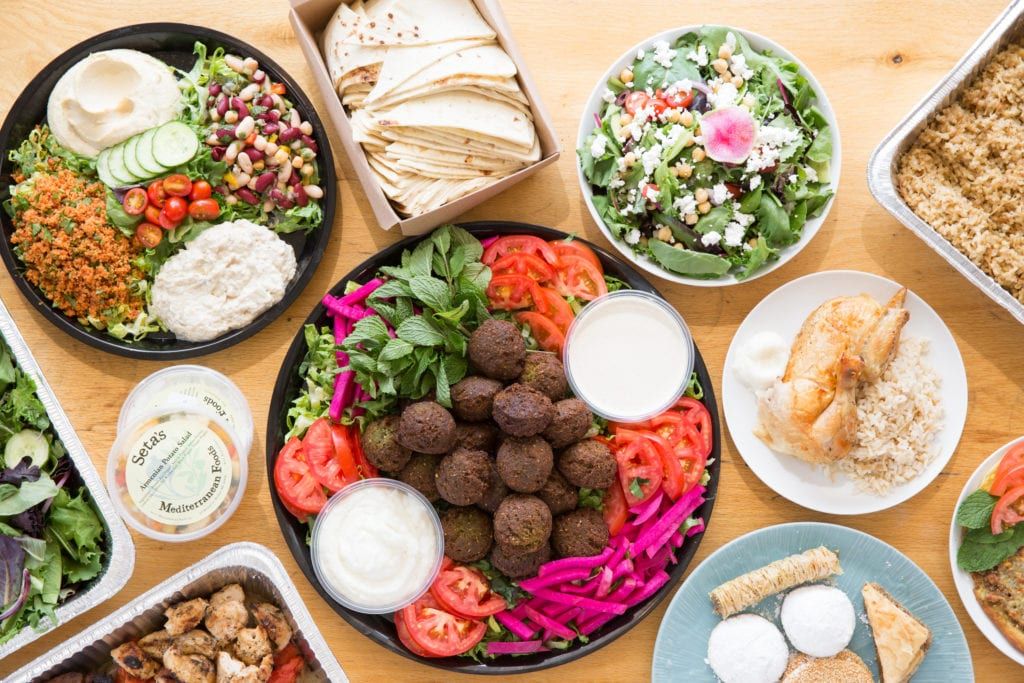This article is part of a series called “Getting Off-Premises”, which examines how to build an off-premises business.
To most people, a catering spread looks like lunch. But to many restaurants, it is a business opportunity. More brands are embracing the robust business of catering. Subway and KFC, for instance, have entered that world. So has Chick-fil-A, whose webpage displays fried chicken strips and elegantly packaged meals to hook customers who eat with their eyes first. Even retailers such as Costco, Walmart, and Target have skin in the game. When a brand as large as KFC makes such an accommodation—offering to “Feed your next party, office get-together, or family reunion with Catering by KFC®.”—it clearly hopes to tap into a lucrative market.
The catering market in the United States is huge—and growing. According to Technomic’s 2017 “Catering Usage and Preferences” report, the catering market topped $58 billion that year. Of that market, more than a third—over $22 billion—went to business catering (B2B), and the balance of nearly $36 billion went to social catering (B2C). These commanding numbers suggest that catering is a big business opportunity that’s only getting bigger.
The Case for Business Catering
Before you begin building your catering operation, understand which customer segments you intend to reach. While operators may be most familiar with the Grubhubs of consumer delivery and with social catering (think buckets of wings and platters of sliders for the big game), the business-catering market is worth considering, too. Not only did business catering haul in over $22 billion last year, but the segment has grown by more than 20 percent from 2014 to 2017, based on annual catering-growth reports from Technomic from 2015 to 2017. Business catering is expected to grow, too, at 5.6 percent annually through 2019. Another advantage is that consumers of business catering tend to place steady repeat orders, offering a potentially better return on investment than social-catering customers, who order less frequently.
Forces Affecting the Catering Market
The Office
What’s fueling the business catering market? Changes in how people work. The rise of the gig economy and more flexible work arrangements means employers have to fight to keep talented staff working in their offices, and they’ve quickly learned that food is a great incentive. Indeed, studies have shown that productivity tends to rise when workers can eat at the office instead of dipping out for a 90-minute lunch break. This phenomenon has created a climate in which more businesses are spending money on office catering. Employers view catering as an investment in employee retention that must be made regularly, rather than occasionally as a rare perk. By Technomic’s numbers, 78 percent of customers of business catering placed an order at least once a month, up from 71 percent the year before. This is all good news for those in the catering business.
Sales and Human Resources
It’s not just the office that is plugged in to the wonder of business catering. Food has become an expected fixture at training sessions, client meetings, pitch sessions, and other corporate gatherings, too. Try scheduling a noon meeting these days without it, and notice the disappointed faces around the room. Office meals keep a team engaged and add value to a presentation or pitch. Over 80 percent of sales reps and HR and training managers report ordering catering at least once per month, reports Technomic.
Fractionalized Consumer Market
Naturally, your restaurant would like a slice of this business opportunity. The good news is that the pie—$22 billion—is a fractionalized consumer market. The business-catering market segment is still evolving in the industry, and few brands have a large enough national footprint to dominate market share. Even a brand synonymous with office catering, Panera, only owns about 2 percent of the business catering market. Because the market isn’t dominated by any one brand, anyone can potentially get a slice.
Behavioral Patterns
You’ll also be pleased to hear something else: no office wants to order catering from the same restaurant constantly. This behavioral pattern further fractionalizes the market in a way that can benefit your venture. Office managers who make decisions on catering are wary of meal fatigue; they know their employees don’t want to see the same delivery box every day. So, if the group’s idea is to order Mexican food on Mondays, your Mexican restaurant doesn’t have to compete with Greek restaurants or salad chains: you just have to be the best Mexican catering option in town. You can differentiate your business and earn regular orders not just with your menu, but by keeping the following four factors in mind as you execute:
- Easy ordering
- Accurate orders
- Timely delivery
- Quality food
If you can outperform other Mexican restaurants on these fronts, you’re poised to corner your local market.
The Benefits
What’s in it for you if you win that recurring Monday order? Great margins. According to Technomic, the median bill for a catering order last year was $180. That figure is relatively handsome, compared to the less than $10 that quick-service restaurants are estimated to receive from a dine-in check, according to a different Technomic study. The numbers tell us that a quick-service restaurant could see a catering order bring in 18 times the money that a single dine-in customer would spend. And because catering orders are prepared, filled, and delivered in bulk, a catering order is typically more efficient to produce, allowing for higher margins.
Clearly, you should consider the size of the business catering market—a market strengthened by consumer trends—because the enormity of that market could lead to incremental sales and margins. This consideration should be part of your strategy as you look to grow your brand. If you haven’t already, it’s time to grab a slice of the pie!
Thinking about launching a catering business? Rally support and increase your odds of success.








